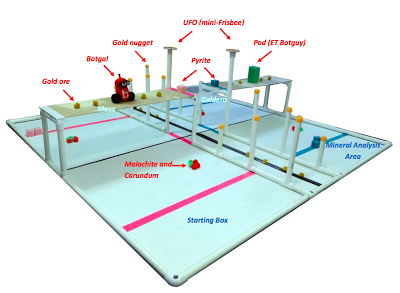 When learning about Engineering, you often hear the phrase: "Design, Build, Test".
When learning about Engineering, you often hear the phrase: "Design, Build, Test". - Design: an idea or concept that solves the problem
- Build: turn the concept into a real world prototype
- Test: try out the prototype and see if it works
Then after you test it, you go back and re-design it to make it better, and repeat the process.
 In the "real world", after testing, you typically go back to Build instead of design. Only, if there is a major issue do you go back to re-design it. Most of your time is spent between building and testing. This process continues until you have a solution that is "Good Enough" or you run out of time and reach a deadline. In Botball, like any engineering project, we will go through this process a lot.
In the "real world", after testing, you typically go back to Build instead of design. Only, if there is a major issue do you go back to re-design it. Most of your time is spent between building and testing. This process continues until you have a solution that is "Good Enough" or you run out of time and reach a deadline. In Botball, like any engineering project, we will go through this process a lot.Okay, I got it...
You then go through the Design, Build, Test cycle.. well mostly Build / Test cycle.. and when you are done, you reach Maintain. This is the process of supporting and maintaining your solution. This allows other people to use your solution or parts of your solution.
Resources
PBS: Design Squad Nation
The Design Process in Action
http://pbskids.org/designsquad/parentseducators/workshop/process.html
James Dyson Foundation (James Dyson is a British inventor, industrial design, and founder of the Dyson company. You probably know his name because he invented the Dyson Bagless Vacuum Cleaner which never loses suction.)
http://www.jamesdysonfoundataion.com/resources
Design, Build, Test -- video on James Dyson Foundation
https://vimeo.com/68665257

